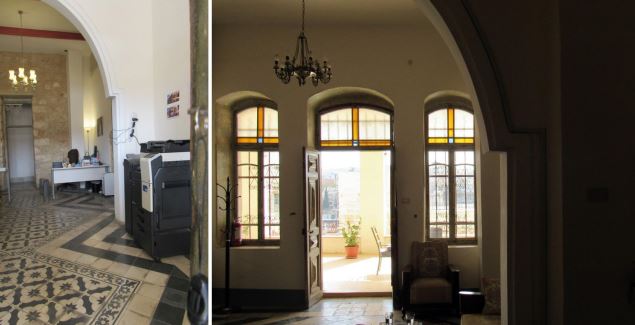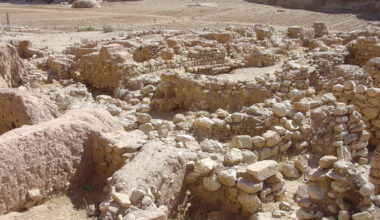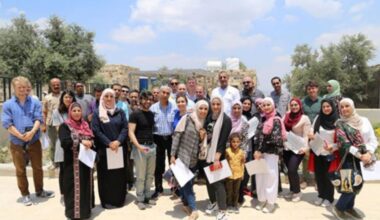Project summary
The Amman Heritage Houses (AHH), funded by the Global Heritage Fund and affiliated with CBRL, records, documents and assesses the architectural heritage of Amman during the 20th century using the EAMENA recording and condition assessment methodology, as the start of a comprehensive record of Amman heritage houses.
Project details
Location: Jordan
Year(s): 2019
Project director(s): Dana Salameen (Department of Antiquities, Jordan), Shatha Mubaideen (CBRL), Rudaina Al Momani (CBRL)
Lead institutions and funding:
- Global Heritage Fund
- Endangered Archaeology in the Middle East and North Africa (EAMENA)
- Council for British Research in the Levant (CBRL)
Project description
The modern history of Amman began at the end of the 19th century when settlements started in the Amman valley, near the water resources, and later expanded towards the seven hills of Amman. In the mid-20th century, the city architecture and its typical urban elements, what architects call typo-morphology, flourished. The residential architecture built around that time holds distinct architectural, historical and socio-economic values. Nevertheless, rapid urbanisation, population growth, and lack of documentation have resulted in a need for proper protection through the mapping and documentation of these houses.
The Amman Heritage Houses (AHH), funded by the Global Heritage Fund and affiliated with CBRL, recorded, documented and assessed the architectural heritage of Amman during the 20th century using the EAMENA recording and condition assessment methodology, as the start of a comprehensive record of Amman heritage houses.
The project studied Jabal Amman and Jabal Al-Weibdeh neighbourhoods, with a focus on the houses from the 1920s to the 1960s, due to their distinctive architectural values. It used data from published resources, reports, photographs, and official institutions working in the field of cultural heritage protection.
Especially in light of the dearth of written resources about the houses, the local community was an essential partner in this project: informal walks, visits, and stories and memories shared by current and former residents were a vital source of information. Moreover, social media platforms such as Facebook provided us with photographs and personal interpretations which were hugely valuable.
Over the six-month project, 108 houses were recorded on the EAMENA database, along with condition assessments, threats, disturbances, photos, and other published resources. The documented units are only a part of the total, but they form a representative sample.
The sample at this phase was originally family houses, but the properties are now currently used for cultural, educational, commercial and residential purposes. On the one hand, several houses have been adapted to become art and cultural centres, schools, or cafes and restaurants, and preserved and presented to grab the attention of the younger generation. On the other hand, some houses are under threat due to abandonment or are rented to tenants with no regular maintenance, which leads to dilapidation and structural damage.
Documentation is the first step for protection. Several approaches to conserve, interpret and present the values of these houses to create living heritage sites that integrate everyday activities within the ancient values of a place would support their transfer to future generations.
We hope to expand our initiative in the future and enrich our documentation with the intangible values of the architectural heritage of Amman to be a model that can be adapted to other Jordanian cities and towns.
Project bibliography
Salameen, Dana; Mubaideen, Shatha; Al Momani, Rudaina. 2021. The documentation of Amman heritage houses using EAMENA’s methodology project. Bulletin of the Council for British Research in the Levant 2020, p 22-23.
2022. Using the EAMENA database to document modern heritage: the Amman Heritage Houses, Jordan, case study. Levant, DOI: 10.1080/00758914.2021.2019412
Published:13 December 2021
















